

From breakfast to dessert: A Millcreek culinary journey
By Jolene Croasmun | j.croasmun@mycityjournals.com
A dining journey at old and new places in Millcreek with some very particular young patrons.
Editor’s note: In this special edition you’ll find articles related to all things food.
Millcreek has so many delightful eating establishments to choose from for even the most discerning palates. The tasting crew, which consisted of this reporter, a 10-year-old girl and her 6-year-old sister, set out to find four different restaurants in
Over the Counter is the place where our group decided to eat breakfast. This diner is a staple in Millcreek right off of 3300 South and has been in business since 1985. It’s a friendly place that attracts families, friends, coworkers and appeals to boomers, Gen X, millennials, Gen Z and Gen alpha. Basically, all generations love this place.
Ten year old Lily ordered the spicy sausage hash with sourdough bread and said, “It was very spicy and really good!” We were also served hot coffee, a Shirley Temple along with a tasty green omelet

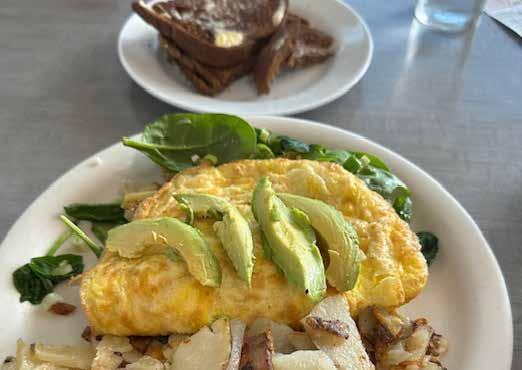





The green omelet has avocado and artichokes along with real potatoes on the side served with hot coffee (if you desire) to help start your day. (Jolene Croasmun/City Journals)
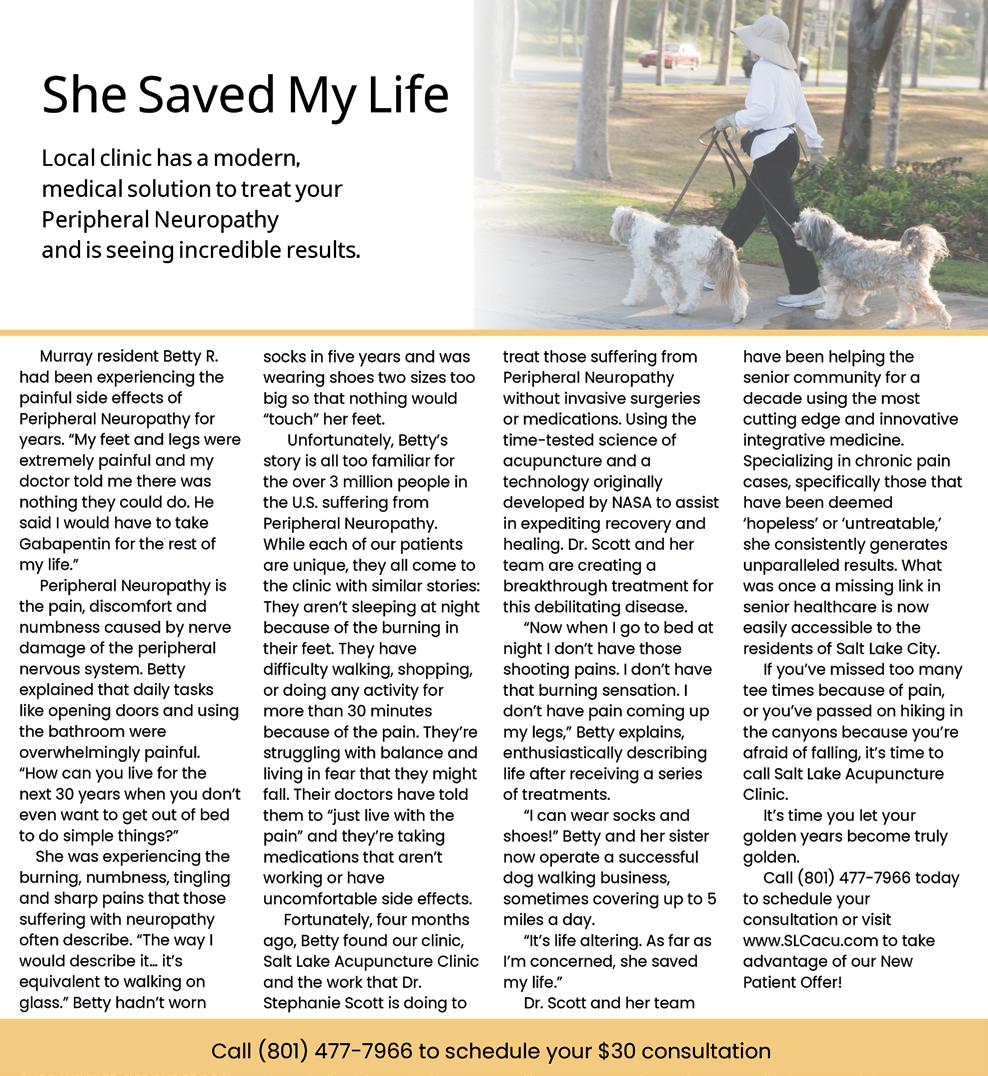



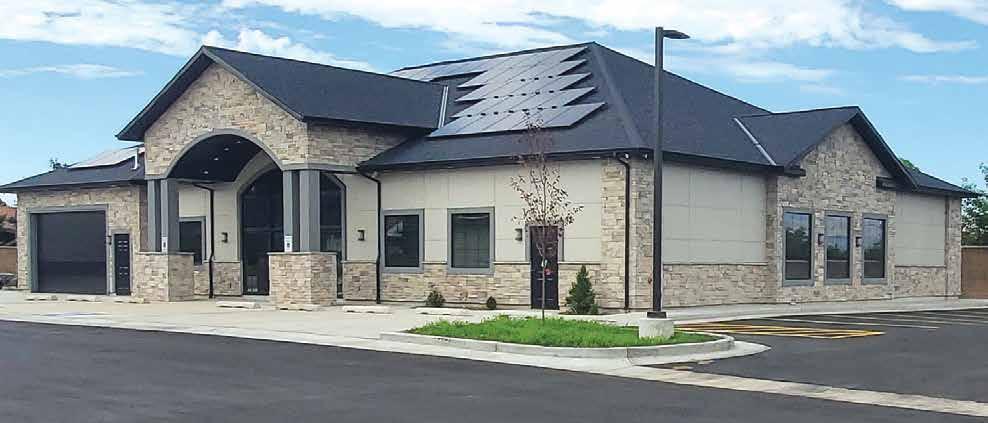




When the cafeteria closes: The harsh reality of summer hunger for kids
Summer is the most difficult time of year for students who rely on school lunches and breakfasts.
By Lizzie Walje l.walje@mycityjournals.com
The Utah Food Bank has historically dubbed summer as the official season of hunger. To some, this might come as a surprise. However, when schools shut down for the summer, so do breakfast and lunch programs, which students often rely on to ensure they’re receiving meals throughout the day.
According to Feeding America, the country’s largest nonprofit organization dedicated to combatting hunger, one in five children in the United States are currently facing food insecurity. In Utah specifically, the ratio is one out of eight people for adults, and one out of six for children. In Utah alone, roughly 220,000 kids rely on school lunch and breakfast programs for their daily nutrition.
The effects of hunger have long been studied and documented, showcasing that regardless of age, missing even one meal can result in a slew of negative consequences, both chronic and acute. Feeding America explains why food insecurity is particularly dangerous for our youngest residents:
“For children, food insecurity is particularly devastating. Not having enough healthy food can have serious implications for a child’s physical and mental health, academic achievement and future economic prosperity. Research shows an association between food insecurity and delayed development in young children; risk of chronic illnesses like asthma and anemia; and behavioral problems like eating disorders,
hyperactivity, anxiety and aggression in school-age children.”
Who you are can also have bearing on your potential to face food insecurity. While food insecurity is an issue that effects people of all backgrounds and circumstances, Black and Latino children are twice as likely to face hunger compared to their white counterparts. Another common risk factor for childhood food insecurity is growing up in a single parent household. In 2022, children who lived in a single income household, typically led by single mothers, were 33% more likely to experience hunger.
Historically speaking, summer is always a difficult season for reconciling hunger. However, 2025 has presented new challenges, especially following budget cuts implemented by the U.S. Department of Agriculture. Back in March of this year, two federal programs were cut, resulting in a combined loss of nearly $1 billion in funding for schools and food banks to buy directly from local farms, ranchers and producers. At the time, the agency claimed it was a decision that would help “return [the agency] to long-term, fiscally responsible initiatives.”
The decision was made by the Trump Administration and Elon Musk’s Department of Government Efficiency or DOGE. At the time, they claimed the decision to cut funding was a means to slash federal spending, and therefore, reduce government waste. Previously, the USDA programs in question were funded through the agency's Commodity Credit Corporation, a Depression-era fund created to buy products directly from farmers. The cuts resulted in a loss of about $660 million in funding this year for the Local Food for Schools program, which is active in 40 U.S. states, including Utah.

This summer the Utah Food Bank will be bringing back its popular kids cafe program, which helps bridge the nutrition gap during the months when school is not in session. (Utah Food Bank)
Despite the jarring budget cuts, the Utah Food Bank sprang into action, as they are accustomed to doing ahead of the summer months. Back in March, they held an event called Feed Utah which was lauded for its convenience. Ahead of the event, pamphlets were left on residents’ front doors which explained how they could participate by either gifting a financial donation or leaving a bag of nonperishable food on their doorstep, which would then be picked up by Food Bank volunteers and employees.
“So it’s really hard for families who have a fixed budget to have money left for food. Do they choose to pay the rent? Do they choose to pay the power bill so they have heat?” said Utah Food Bank CEO and President Ginette Bott. “We recognize that not everyone can [donate] at this time. But at some point, in the future, please help us, or your neighbors.”
After the success of the Feed Utah event, it was time again for the food bank to start tackling its most critical season: summer. Preparations for summer often begin as early as Thanksgiving and Christmas of the prior year, and with the added stress of federal budget cuts looming, it was imperative to get a handful of programs and events
on the docket.
Incidentally, the USDA will still be providing funds for the Utah Food Bank’s Summer Food Service Program (SFSP). This program expands upon the food bank’s Kid’s Café program, which focuses on bringing meals to children 18 and under during the summer months. The program runs through Aug. 8 and includes two means of operation. Children can either go to an open site, where anyone under 18 will receive a meal, or they can access a closed enrolled site if they’re participating in specific activities.
Each site will offer either individual daily meals or a weekly box containing seven breakfasts and seven lunches. Meal types and schedules vary by location, but all sites will be closed June 16, July 4 and July 24 in observation of state and federal holidays.
To find a meal site near you, visit www.UtahFoodBank.org/SummerMeals, text “SUMMER” to 914-342-7744, or call the USDA National Hunger Hotline at 1-866-3-HUNGRY. More than 300 sites are available statewide, with Utah Food Bank operating 60 of them. Children must be present to receive a meal.
Another helpful program children can utilize this summer is SUN bucks or summer EBT. Eligible families will receive a $120 credit for each school-aged child in the household. To learn all about the SUN bucks program, who qualifies, how to apply, and more, visit www.jobs.utah.gov/ customereducation/services/sebt/index.
For adults in need of food assistance, the Utah Food Bank is a great place to start locating resources. Visit www.utahfoodbank.org/get-help/. This link can also be used by adults who are wishing to donate or volunteer at the food bank. l
MILLCREEK TEAM
The Millcreek Journal is a monthly publication distributed directly to residents via the USPS as well as locations throughout Millcreek.
For information about distribution please email hello@thecityjournals.com or call our offices. Rack locations are also available on our website.
The views and opinions expressed in display advertisements do not necessarily reflect or represent the views and opinions held by Loyal Perch Media or the City Journals. This publication may not be reproduced in whole or in part without the express written consent of the owner. © 2019 Loyal Perch Media, Inc.
Scott | bryan.s@thecityjournals.com
Barton | travis.b@thecityjournals.com ADVERTISING EXECUTIVES
Mieka Sawatzki | mieka.s@thecityjournals.com
Lindsay Andreasen | lindsay.a@thecityjournals.com
Jason Corbridge | jason.c@thecityjournals.com
Ryan Casper | ryan.c@thecityjournals.com
Marc Davis | marc.d@thecityjournals.com
Lydia Rice | lydia.r@thecityjournals.com
Rack
Anna Pro Ty Gorton Stacey LaMont
9500 South 500 West, Suite 205 Sandy, UT 84070 PHONE: 801-254-5974

time,” said our server Bustos who has been working at the diner for eight years. “Our busiest times are on Saturdays and Sundays.” Door Dash keeps them busy too.
A popular item on the menu is, “The Train Reck, it has bacon, sausage, vegetables, meats and they pile it up with eggs and we put gravy on the top. It is the signature plate here. It is really good,” said Bustos.
“People keep coming back because of the food and the ambiance at the diner,” Bustos added.
“We also have really good pancakes and French toast and the spicy sausage hash is really popular too.”
Over the Counter showed us friendly service that kept our drinks filled and tummies full to start our day.
Lunch
Millcreek Common was our selection for lunch where family members enjoyed skating, rock climbing, shopping and a splash pad which all helped burn some calories. The activities really worked up our appetite for the gourmet pizza choices at the Millcreek Pizza House (MPH). Owned by Stacy and Jim House, the pizza style is heavily influenced by Stacy’s experience growing up in Chicago.
“We have way too much to choose from and on top of that, you can customize anything you have to have on the pizza,” said Abram, who is part of the wait staff at MPH. “There is a T-rex for meat lovers and there is little miss figgy. I am sure, we are not the first place to put figs on a pizza. It has pesto, figs, prosciutto, brie and hot honey. Then there is the papa Smurf which has roasted garlic, alfredo sauce and caramelized onions on it and the white buffalo, which is buffalo chicken pizza.”
Pizzas come in a 10-inch and 16-inch pie selection and during Millcreek Common events, they will offer pizza by the slice. The menu has vegetarian selections along with a gluten-free crust. “We offer mostly pizzas and salads like heirloom tomatoes salad, classic Caesar, and you can build your own salad and pick your own toppings. There is garlic bread and caprese bites,” Abram said.
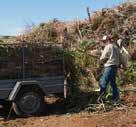
If you haven’t yet experienced Millcreek Pizza House (MPH), well treat yourself and others. Eating in or takeout is available. The servers are friendly and helpful. “Of course enough can’t be said about our location, location, location,” Abram added.
MPH is open 11 a.m. until 9 p.m. and during the summer until 10 p.m. seven days a week and Abram added, “We serve wine and even local beers.”
Dinner
Gary’s Asian Bistro located in Olympus Hills shopping center was where our crew went for dinner. It opened recently and is owned by Gary Lee.
“I am a chef and I am a restaurateur,” said Lee who has been in the business for over 30 years. Lee started out at Ocean City in 1993 at the Cottonwood Mall then left to start his own restaurant, Asian Star.
“I founded Asian Star in 1998 at the Canyon Racquet Club then later moved to the Union Park location in 2006. I decided to retire two years ago. I sold everything, land, building and business. I was thinking I could retire. But no. Some of us are not made to retire. I just need to work so I am semiretired. I opened this up and it gives me a sense of purpose to get up in the morning,” Lee said.
Lee brought over the chef and some of the staff from Asian Star to this new bistro. Many of the items on the menu are old favorites from Asian Star like walnut shrimp, General Tso’s chicken and kung pao stir-fry.
We had excellent service from Colby and we all enjoyed family style selections. There was even a kids’ menu and chopsticks along with chopstick helpers and, of course, a fortune cookie which pleased the littles.
Open six days a week from 11 a.m. to 9 p.m. weekdays and until 9:30 p.m. on weekends and closed on Sundays.
Sweet ending
With Utah’s summer heat, it is hard to pass up a chance to eat ice cream. Luckily, Handel’s Homemade Ice Cream is located in Olympus Hills shopping center too. “We have been open for three years now. We are always busy,” said the young cashier
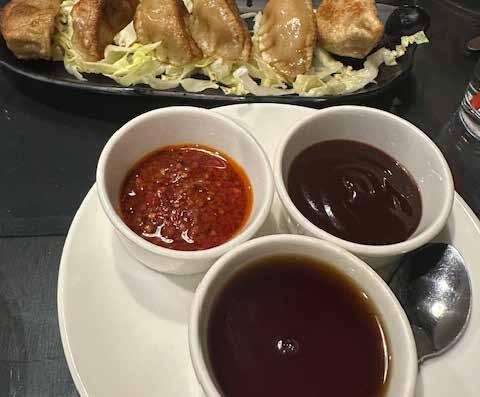
at Handel’s. The proof was in the line that had formed in the lobby.
Handel’s was started in 1945 in Youngstown, Ohio by Alice Handel and this store in Millcreek, like all Handel’s shops, offers their own unique flavors of homemade ice cream.
“We sell cones and dishes and our most popular flavor is probably graham central station,” said the server. Our family settled on sticky fingers, coconut cream pie and blue monster for our evening indulgence after a long hot summer day. It was just yummy!
Handel’s is open seven days a week from noon to 10 p.m. and until 11 p.m. on Fridays and Saturdays. l


Pork potstickers and delectable sauces served at Gary’s Asian Bistro. (Jolene Croasmun/City Journals)
A young server at Handel’s ice cream shop in Olympus Hills Shopping Center serving the good stuff! (Jolene Croasmun/City Journals)
Beast Mode: Sandwich scene boasts
call my future sandwich shop.’”
The name is a tribute to the legendary New Jersey Devil, an elusive monster of East Coast folklore, said to haunt the Pine Barrens of Kris’s hometown.
By Peri Kinder peri.k@thecityjournals.com
At16, Kris Davis knew one thing for sure: he would have nothing more to do with food or customer service. Kris grew up in Collingswood, New Jersey, and had worked as a host for a chain restaurant before deciding the restaurant industry was not for him.
Now, the owner of Beast From The East brings bold new flavors to the Salt Lake food scene with his authentic cheesesteak sandwiches.
Although he swore off the food industry as a teen, Kris was drawn to the fine-dining environment, with its rigid schedule, high expectations and over-the-top customer service, and he fell in love with it. After working at an upscale restaurant in New Jersey for several years, he took a break to explore Ecuador and the West Coast before relocating to Utah.
“I ended up getting a job at The Yurt at Solitude within a couple of days of living here,” he said. “I learned a lot. We increased the quality of what the Yurt was known for. We turned it from a mountain experience dining, to one of the best fine dining restaurants at the time.”
But with all his experience, what he really wanted to do was open his own sandwich shop where he could introduce Utahns to the original Philly cheesesteak, something he hadn’t found anywhere in the state.
After some trial and error, Davis partnered with the owner of Cruzrs Saloon at 3943 S. Highland Drive in Holladay, where he took over the bar’s kitchen six months ago. To say it’s been a hit is an understatement. Beast From The East has garnered a cult following thanks to his cheesesteak recipe and his wife’s social media skills.
“On one of our first dates, he said it was a dream of his to open up a sandwich shop,” said Megan Davis. “Funnily enough, we came up with the name on a drive. He woke up from a nap and said, ‘Beast From The East is what I’ll
Kris serves the types of sandwiches he grew up eating, using ingredients like sharp provolone, broccoli rabe and capicola. Customer favorites include the Broad Street Bully, a parmesan-crusted chicken breast sandwich dedicated to the rough-and-tumble Philadelphia Flyers hockey team; the South Street Slaughterhouse and the Godfather, a cold Italian sub.
But the Beast From The East’s bread-andbutter is the JD Philly Cheesesteak featuring thinly shaved beef, grilled onions and choice of cheese. The menu also includes burgers, wings and a variety of fries.
“This isn’t your normal bar food,” Kris said. “We use fresh ingredients from local vendors. There’s a farm up the road growing some of our produce. I get all my sausage at Gerome’s Market. That’s the caliber we’re going for.
“We serve food exactly like you’re gonna get in your favorite place back East, back in Philadelphia. People are gonna keep coming back. I mean, I guarantee everyone in a 5-mile radius from this restaurant has gained 5 pounds.”
The Davises hide Beast Bucks throughout Salt Lake County, offering free subs to anyone who finds the cards. The restaurant’s Instagram page @beastfromtheeast_subs features fun information, menu changes and has made Kris a bit of a celebrity, branding him The Beast.
He hopes to expand his business to include new locations in the Salt Lake Valley, but is being careful not to grow too quickly. By incorporating the rigid structure of highend dining, quality ingredients, a charismatic approach to customer service and delicious recipes, the Davises (including Kris’s parents, who now live in Murray) hope to build a lasting impression in the area while providing an East Coast experience.
For information about hours and menu items, visit beastfromtheeastsandwichery. com. Because the restaurant is located in a bar, guests must be 21 or older, but take-out orders are available.

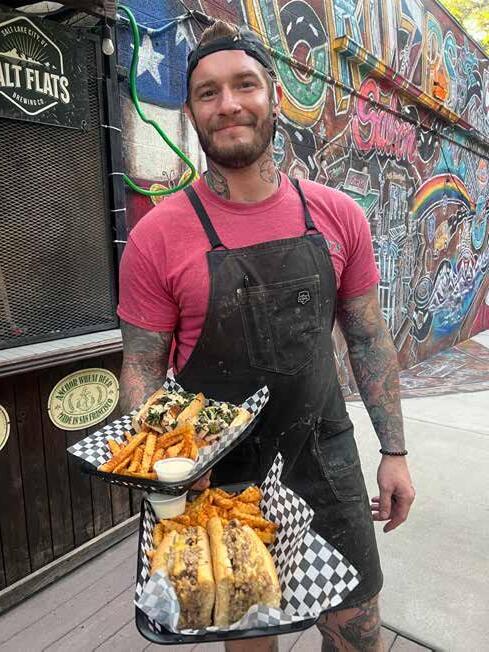
“We’re serving things that aren’t available everywhere, you can only get it right here,” Kris said. “It takes a while to earn people’s trust. We have people coming in for sandwich-
es with broccoli rabe. They never knew what that was before…There are a lot of places that I love to go for sandwiches, but they’re not going to be as authentic as what I’m doing.” l















At Beast From The East in Holladay, Kris Davis creates genuine East Coast cheesesteak sandwiches for a growing fan base in the Salt Lake Valley. (Photo courtesy of Megan Davis)
From $300 dreams to $1,000 realities—barbecue ain’t for the faint of heartburn
Rainy days can be a food truck’s biggest villain.
By Shaun Delliskave s.delliskave@mycityjournals.com
WhenKenneth Hunt rolled into Utah in the summer of 2019, he brought with him a weathered smoker, years of culinary experience and an unwavering Texas pride. Now, six years later, he’s the owner and sole operator of Hunt’s Texas BBQ, a mobile barbecue operation serving slow-cooked brisket and pulled pork to hungry customers across the Salt Lake Valley. But behind the smell of mesquite smoke and the sizzle of meat is a oneman production fueled by grit, consistency and a love for the craft.
“My wife and two kids moved down here from Houston in June of 2019,” Hunt recalled. “After living in the Houston area for 40-plus years, I’ve had my fair share of hurricanes and storms and whatnot…we were just at the point to where we were tired of redoing a house and dealing with floods and everything that came along bad—the chemical plants and everything like that.”
Utah, with its mountain views and considerably less humidity, offered a fresh start.
“I’ve always enjoyed barbecuing for friends and family and coworkers and stuff like that, so I figured I’d take a shot. We bought this trailer, added some pits, and that was 6 years ago. Been going strong since then,” he said.
But “going strong” doesn’t mean it’s easy. Hunt runs the truck solo, managing the entire operation from purchasing to prep to service. His wife, a schoolteacher, is busy during the academic year, leaving Hunt to wear every hat in the business.
“I pretty much do all my shopping and scheduling and whatnot,” he said. “So it gets a little hectic and crazy trying to juggle every hat to wear and still put out some great Texas barbecue.”
The day often begins before sunrise. The raspy voiced entrepreneur still maintains his friendly Texas drawl.
“I start cooking about six in the morning. And of course, these briskets—shoot—they go 10 to 12 hours at least, so nothing’s really served day-of. I’m smoking briskets constantly and pork butts. But with barbecue, there is no exact time. When they’re done, they let you know they’re done.”
That intuition—listening to the meat— comes from experience, not a recipe book. Once cooked, meats are wrapped and refrigerated until serving.
Unlike a brick-and-mortar restaurant, a food truck requires strategy: site scouting, setup and building a customer base from scratch. Hunt wasn’t sure if Utah was going to be a permanent home, so the trailer offered flexibility.
“With the price of real estate for a storefront, you gotta put a big investment into that and really, really, really want to stay here and put down roots. With that being said, it’s a lot
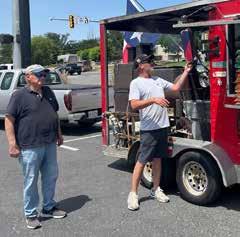
easier to chase the money, per se, with the food truck,” he said.
His livelihood was temporarily derailed as vandals hit his trailer one night. It took several days to get it in operating order.
And chasing the money means learning the terrain. Not every event is a winner.
“I remember my first year or so—if I could go out anywhere and make $300, I thought I was doing something really good,” Hunt said. “Now, six years later, those times have changed drastically.”
He’s learned which locations and partnerships are profitable, and which aren’t. For example, events with the local Food Truck League can be a double-edged sword.
“They’re great for starting out and stuff like that, but they do charge us food trucks 10%,” Hunt explained. “So always having to pay somebody money to do your own stuff is not really the best choice. You go out with 10 different trucks and some days it’s hard to make $1,000—you might only do $300 or $400. And for me, that’s not really sustainable.”
There’s also the logistical gamble of having too much food left over—a cardinal sin in Hunt’s book.
If he does bring anything back, it usually doesn’t excite his family. “After six years, my family really doesn’t care to dine on barbecue for dinner any longer.”
When the weather cooperates, business is better. “The rain is the only thing that'll stop me from serving. Nobody really wants to come out in the rain,” he said. “The snow—there’s no real problem here in Utah with the snow. People are used to it.”
Running the truck isn’t just about cooking—it’s also about customer service. And sometimes, that requires quick triage.
“There’s some people that want to be catered to when they come to you,” Hunt said. “And if there’s 20 people in line, you don’t always have that extra four minutes to sit and chat. Some people might get upset that I have to rush you through the line, but if it’s snowing outside, nobody really wants to wait 40 minutes to get their plate.”
Still, he makes time when he can. “If


you still want to chat when I’m done, more than happy to come outside the trailer and talk to you.”
Some days, he runs the truck five or six days a week. Other weeks, only twice. That’s the balance he tries to strike between work and life.
“My wife is a teacher and she’s off for summer, so there are times that I want to spend a couple days with her. We’ll take a vacation. I might cancel some events just so I can spend more time. Because it’s not always just about work.”
Even after six years, the flame hasn’t gone out.
“I still enjoy doing it,” he said. “I don’t know what else I’d do right now. After six
years of doing this—I still love it.”
You can find Hunt’s Texas BBQ trailer next location on Facebook or Instagram.l

Kenneth Hunt stands between his barbecue smokers and equally large Texas flag. (Shaun Delliskave/City Journals)
Kenneth Hunt checks on his smokers before serving some fresh brisket. (Shaun Delliskave/City Journals)
Kenneth Hunt goes over the menu with a customer. (Shaun Delliskave/City Journals)
Utah’s newest plant-based deli offers variety and convenience
The new plant-based restaurant, Vertical Deli, dishes up a plantbased diet, not a vegan lifestyle.
By Sienna Chubak s.chubak@thecityjournals.com
The Vertical Deli, a new branch of the Vertical Diner, recently opened in June on State Street and 3300 South. Ian Brandt, the founder and owner of the Vertical Deli, has been a part of the plant-based restaurant scene since 1998, but the deli operation is the start of something new.
“A diner has to be a very specific building, whereas a deli can be in a gas station. So it can be placed anywhere. So there’s not really a lot of limitations on that,” Brandt said.
Brandt has been working with general manager Taylor Duffus to create and expand their business. Duffus explained, “We sell a plant-based diet. We don’t sell a vegan lifestyle.” With an already limited audience, the pair is striving to keep their Vertical Deli doors open to more than just vegans.
Brandt is no stranger to catering to a smaller customer base. After studying hospitality at the University of Utah, he’s well-equipped to deal with the continual societal evolutions that his businesses have gone through in the past 27 years.
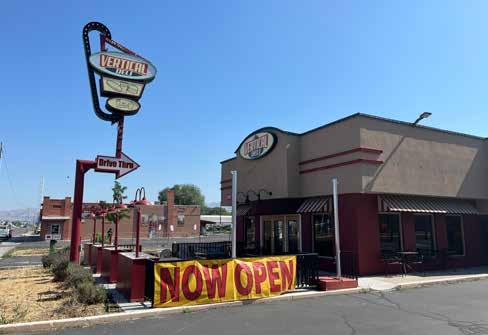
In 2007, with the Diner’s original opening, Brandt began his own manufacturing for the business. He didn’t want to depend on other companies for things like quality control and consistent purchasing, so he got a warehouse and has relied only on his own business ever since.
“I always think there’s a way to make
something work. You just have to figure it out. This is a business that should never have worked. Just doesn’t make sense, and it’s working,” Brandt said.
One thing that Brandt remains true to is never changing what he believes in just to bring in more business. “If half the menu were a vegan menu and half the menu was not, we
would probably have 10 times the sales, because our food’s good. It just doesn’t speak for everyone’s demand,” Brandt said.
He is uninterested in trying to bring in more business by changing his menu to anything other than plant-based. “I guess that’s the benefit that you get from dining with us. You’re at least buying food from a company that truly believes in the mission behind what we’re doing and is not just trying to do it for the money,” Brandt said.
Their fully plant-based menu is already extensive, providing as many options, if not more, as any other restaurant would have. From breakfast and lunch to desserts and sides, and even a large number of gluten-free options, the Vertical Deli provides a plethora of delicious dishes for anyone to try.
Brandt isn’t interested in looking for a prime retail location, either, since he trusts his audience will find him. The Vertical Deli location isn’t somewhere with a lot of foot traffic like other ideal restaurant spots downtown; however, Duffus explained that they have a loyal customer base already from the Vertical Diner, and the plant-based community is intimate; the people who want to eat plant-based will find them without a problem.
Their new location is the first deli of many coming to Utah, and Brandt and Duffus both remain solid in their goal to keep their plantbased business as one that you can depend on to always honor what they believe in. l




The new Vertical Deli location serving a plant-based diet. (Sienna Chubak/City Journals)
Spoil your pet at these top 5 dog bakeries
From gourmet biscuits to birthday pizzas, local dog bakeries serve up tail-wagging treats.
By Peri Kinder peri.k@thecityjournals.com
Dogbakeries are popping up all over, catering to man’s best friend. If you’re looking for something as simple as a healthy, organic treat or as elaborate as a birthday cake for your furry friend, these local bakeries will help show your fourlegged bestie how much you love them.
Dela’s Doggy Desserts, 1538 W. 7800 South (West Jordan)
Your canine companion will love the selection of yummy treats at Dela’s Doggy Desserts. The problem is, you’ll want to buy them all! The Doggy S’more features a peanut butter and pumpkin cookie with carob and yogurt topping. Or try the Doggy Donut Pack with four doughnuts made from sweet potato and oats, topped with cream cheese, peanut butter and carob.
Dela’s also offers a unique outdoor space, which includes a grass play area and a covered patio, to host your pup’s birthday or other special occasion. The shop’s pet boutique sells adorable collars, leashes, bandanas, food bowls and accessories. Plus, there are fun gifts for dog parents including picture frames, key chains and glasses. Visit online at DelasDoggyDesserts.com.
Rebel Paw, 7681 S. Main St. (Midvale)
The popular dog food truck has found a permanent home on Midvale’s Historic Main Street, where pups and their owners can browse for the perfect treat or toy. The bakery features healthy dog-friendly snacks like cupcakes, cinnamon rolls, peanut butter sandwich cookies, dog pies and more. Rebel Paws
makes elaborate cakes in an assortment of designs for adoption day celebrations or any other event.
Pup parents can also customize a bandana, choosing from a variety of fabrics, sizes, colors and patterns. If you’re hosting a dog party, the Rebel Paw food truck is available to book so your puppy and all his friends can enjoy delicious treats. For more information, visit RebelPaw801.com.
Ma & Paws Bakery, 1227 E. 3300 South (Millcreek)
Featuring natural, holistic, organic foods, Ma & Paws Bakery hopes to alleviate many problems affecting pets, including allergies, joint issues, digestive ailments and kidney troubles. The bakery has 20 different flavors of gourmet dog biscuits in four biscuit sizes to suit any dog. One of the bakery’s best-selling items is the custom-made birthday pizza that includes whole wheat dough, tomato sauce, shredded chicken and parmesan cheese.
Ma & Paws also has an assortment of natural dog foods, vitamins, supplements, toys, collars and chews. For bath days, use the self-serve dog wash for less than $20 or give Fido a Theraclean Dogbubbles bath that deep-cleans her fur. Visit MaAndPawsBakeryInc.com for more info.
Jake’s Bakes Dog Treats (Online)
Kerri Cooper creates fun and original pup snacks with superfoods like pumpkin, turmeric, sweet potato, oats, hemp hearts, flax seeds and blueberries. Doggy favorites include the Bacon & Cheddar Woofles with eggs, the canine cannoli featuring Greek yogurt and cinnamon and Pup Tarts in strawberry or blueberry.
Jake’s Bakes is an online-only shop but Cooper frequently attends farmers markets in Salt Lake, Weber and Davis County,



where her fans can pick up a bag of treats for their furry friends. Follow her Instagram page @JakesBakesTreats for her summer schedule. For a complete list of treats, snacks and chews, visit JakesBakesLLC.com.
The Dog’s Meow, 2047 E. 3300 South (Millcreek), 866 E 12300 S. (Draper)
The winner of several Best of State awards, The Dog’s Meow has been operating for nearly 30 years. Now, with two locations, the shop is a pioneer in the healthy dog and cat food industry, bringing quality products to furry friends across the state.
The Dog’s Meow only carries the highest quality products, so customers know the food, treats, supplements and toppers they buy will support their pets’ healthy growth. Pet owners can also purchase safe toys, dental and grooming products, biodegradable poop bags and more. Plus, the DIY dog wash stations help keep puppies clean for an affordable price. Learn more at DogsMeow.com. l
When minutes count, count on our emergency care. Get
to know us before you need us.
When you need emergency care fast, the closest emergency room is a smart thing to know. You never know the level of care you’ll need when an emergency happens and choosing the right ER can make all the difference. And a hospital ER comes with the confidence of additional services right on-site.
CommonSpirit Holy Cross Hospital – Salt Lake has been awarded Chest Pain Center Accreditation from the American College of Cardiology (ACC). Facilities that achieve accreditation meet or exceed an array of stringent criteria for evaluating, diagnosing and treating patients who may be experiencing a heart attack.
Find emergency care close to you at mountain.commonspirit.org
i s
1-303-673-8166 (TTY: 711).
Show your sweet pup some love with homemade treats, healthy foods and fun cakes from dog bakeries in the area. (Canva stock)
Favorite local eats for every mood and moment
By Holly Curby hello@hollycurby.com
Whether it's the sizzle of hibachi flames, the comfort of pasta inside a vintage trolley, or sharing fondue by candlelight, the way we dine shapes our memories just as much as the food itself. In a world that increasingly values experience as much as flavor, eating out has become more than a necessity or luxury— it's a ritual of connection.
According to the National Restaurant Association, more than 60% of Americans dine out at least once a week, and 45% of adults say restaurants are essential to their lifestyle. From special occasions to everyday indulgences, here’s a roundup of my personal favorite local spots, categorized by the kind of meal and mood you might be in.
Sometimes, the best side dish is fresh air. When the weather’s kind, there’s nothing like dining al fresco:
• Trellis Café – My personal go-to for patio dining. Nestled among greenery, the ambiance is as fresh as the seasonal dishes. Ideal for a relaxed summer lunch, but be sure to make reservations and tell the amazing hostess, Jenn, I say hello.
• Cafe Molise – With an elegant courtyard downtown, it's perfect for Italian fare under the open sky. Try the penne di caprino and creme brulee.
• Silver Fork Lodge – Up Big Cottonwood Canyon, this spot offers rustic charm, a wooden deck and mountain air that makes everything taste better.
• The Terrace Cafe at St. Regis (Deer Valley) – Elegant, upscale and offering panoramic views, their patio is a destination in itself. Guests are transported up to the restaurant in the complimentary funicular which is an experience in itself.
• The Cliff Dining – True to its name, you’ll dine perched above scenic terrain. Great food and even better sunsets.
• Ruth’s Diner – Escape the city into the serene ambience of Emigration Canyon. Check out their website for a schedule of live music on the patio.
If you’re after a unique setting, these places deliver delicious food with a side of novelty:
• Spaghetti Factory – Where else can you enjoy classic spaghetti and meatballs while sitting inside an old trolley car? It's quirky, nostalgic and surprisingly cozy.
• Prairie Schooner – Steak and hearty American fare served in covered wagons under dim lantern light. A nod to Utah's pioneer past, this one’s both tasty and theatrical.
• Billy Buncos – A fun, funky place where you dine under cars suspended above you. The food? Equally creative and satisfying.
If your meal is also a game night or show, these places turn dining into entertainment:
• Good Move Café – Board games and bistro-style eats? Count me in. It’s the perfect spot for casual hangouts, family nights or a low-key first date.
• Benihana or Bonsai – Teppanyaki chefs cook right in front of you with flair and fire. It’s dinner and a show, seasoned with soy sauce and laughter.
• Desert Star Playhouse – Family-friendly musical parodies in a western-themed saloon. Get ready to cozy in with your neighbor as you share a pizza or enjoy a good old-fashioned root beer float.
Whether it's a taste of Israeli cuisine or a club sandwich, here are a couple more must-visits:
• Feldman’s Deli – A standout for East Coast-style deli fare with an Israeli twist. Their pastrami sandwich is legendary, and every entree ordered brings a much-anticipated bite.
• The Coffee Shop at Little America Hotel – Sure, it's the sister hotel to the luxurious downtown Grand America, but their club sandwich? Perfection. Pair it with a walk around the manicured grounds of their neighboring sister hotel for a surprisingly affordable treat in an upscale setting.

Dining out isn't just about convenience. It’s about atmosphere, ritual and the pleasure of sharing space with others—whether that’s with strangers gathered around a teppanyaki grill or loved ones sharing dessert under a starlit patio.
As Julia Child once said, “People who love to eat are always the best people.” And luckily, our local food scene is full of places that let you eat well—and live fully.
Want to learn more about how to up your dining at home experience? Check out Holly’s Highlights podcast Season 3 Episode 14. Available wherever you listen to podcasts. Have a favorite dining spot or want me to come visit your restaurant? Connect with me at www.hollycurby.com. l






Patio dining at Thanksgiving Point’s Trellis café. (Holly Curby/City Journals)
Tips and tricks for lunch remix
Help for parents looking for healthy and fun school lunch ideas.
By Jet Burnham j.burnham@mycityjournals.com
foods, sugar and synthetic food dyes are the latest antitheses of healthy childhood nutrition. The USDA has called for changes to school breakfast and lunch menus that limit sugars and utilize locally sourced products. And the Utah Legislature just passed a bill to ban synthetic dyes and certain additives in foods served in Utah schools.
“There's definitely a big trend moving towards the more natural side of things, or trying to move away from that processed food and the artificial dyes,” Sharon Turner, a certified nutritionist, said.
Healthy food not only fuels kids’ physical development but it also boosts their ability to learn, said Turner, who works at the Utah State Board of Education.
“Students need to show up nourished and healthy to learn and perform their best, so it's important that they're getting a good breakfast and a good lunch, and they're able to pay attention in class and socialize and get the full benefit of their educational experience,” she said.
Keeping track of what kids should and shouldn’t be eating can leave parents feeling overwhelmed and unsure about what to pack in school lunches. Turner suggests three tips to
ensure kids have healthy, appealing and safe food to fuel their learning as they head back to school.
1. Pack a variety. Kids should eat an assortment of foods from wholesome food groups—fruits for fiber, carbs and natural sugars, and vegetables for nutrients such as iron, beta carotene and antioxidants. Whole grains and proteins complete the meal.
Try this: Charcuterie boards are a healthier reinterpretation of the Kraft Heinz Lunchables, which have always been popular with kids. Create your own by mixing and matching different ingredients from a variety of food groups and arranging them in a compartment-style container. Punch up the appeal with whimsical shapes created by cookie cutters or food molds.
2. Pack protein. “The best thing to do would be to pack something protein rich to keep the student satiated throughout the day,” Turner said. Options include hard boiled eggs, nuts, seeds, jerky, cheese, chicken salad, hummus, beans, peanut butter or protein pancakes, quinoa granola bars, edamame and overnight oats.
Try this: A protein-packed, crunchy alternative to potato chips is easy-to-make roasted chickpeas. Rinse and drain a 15.5 oz can of chickpeas/garbanzo beans. Let dry on a paper towel for 15 minutes. Toss with 1 tablespoon of olive oil, 1 teaspoon garlic salt and ½ cup finely grated parmesan cheese. Spread sea-



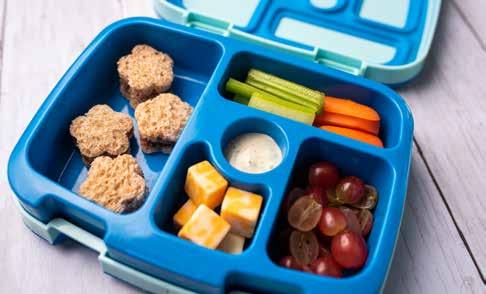
soned chickpeas on a baking sheet and bake for 25-30 minutes at 400 degrees or until crunchy. Recipe by Pretty Providence.
3. Pack ice. Send foods containing mayo, meat, dairy or eggs in insulated bags with an ice pack. “Not only are you making good choices, but the food is stored properly and safely as well, and it's not going to heat up and make the child sick,” Turner said. If that’s not an option, stick to foods that are shelf stable and appealing at room temperature such as crackers, muffins, freeze dried fruits and vegetables, trail mix or unpeeled whole apples or bananas.
Try this: Laura Fuentes of the website MOMables suggests ice packs should be placed directly by the foods that need to remain cold. However, ice packs can add to the weight of an already heavy backpack and can also sometimes go missing. Her solution is to substitute ice packs with frozen food items that will keep foods cold but eventually thaw to become part of the menu. Foods you can freeze as an alternative for an ice pack include a juice box, bottled water, yogurt tube, applesauce pouch, banana (peeled), berries, grapes, pineapple or mango chunks, mini muffins and cheese sticks. l












Containers with compartments creates a colorful charcuterie-style lunch. (Adobe stock photo)

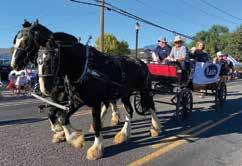
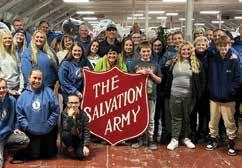



Larkin Mortuary’s dedication to the Utah community is deeply rooted in its history and family values. For over 140 years, spanning seven generations, the Larkin family has proudly served Utah families in their time of need. This commitment extends beyond providing funeral services; Larkin Mortuary actively engages with the community by hosting events and giving back through various service initiatives such as the annual Memorial Day Program, golf tournament, Trunk or Treat and Live Nativity.
LOCAL
How the Food Truck League changed Utah’s dining culture
More than 250 trucks serve up vibrant menu items at thousands of events each year.
By Peri Kinder peri.k@thecityjournals.com
It’s
been 10 years since the Food Truck League held its first event at Sugarmont Plaza in Salt Lake County. Organizers didn’t know what to expect but figured they’d be lucky to get 500 people to attend. When 2,000 people showed up, Food Truck League Founder Taylor Harris realized he might be on to something.
A decade later, food trucks have transformed Utah’s culinary landscape, introducing cultural fare, fusion meals and unique twists on old favorites. More than 250 food trucks are registered with the Food Truck League in Utah, each serving vibrant, bold and palate-pleasing menu items at approximately 10,000 events annually.
“As far as small companies coming up, Utah is an entrepreneur-friendly place,” said Eliot Steimle, Food Truck League general manager. “For anyone who wants to get into a restaurant, a food truck is a nice half-step in that direction, where they can get experience, find something they can experiment with and build a following.”
Food trucks like Cupbop, Waffle Love and Salt Lake Barbecue have taken their menus into brick-and-mortar locations or food halls where they can expand their customer base. Other chefs like the ability to travel across the county, sharing their food with new communities.
Successful members of the Food Truck League utilize savvy marketing strategies and leverage social media platforms to cultivate loyal fans. Whether it’s behind-the-scenes content, interactive videos, daily location updates, tailored hashtags, curated photos or exclusive items sold only at specific events, creative brand-building is an important part of a food truck’s story.
“It’s fun to watch them come into their own,” Steimle said. “Most of the time, it’s a chef who starts their food truck, but that marketing element of trying to figure out what
their brand is and their identity, that part is really fun.”
As the state’s food truck industry evolved, catering everything from office lunches and corporate events to weddings and concerts, chefs have learned that flexibility and collaboration are some of their best tools. Being able to adapt to weather conditions, listening to customer feedback and pivoting when needed can help a food truck owner stand the test of time.
Legislation and permitting for food trucks have also improved over the last few years. When food trucks first appeared on the scene, every city had different regulations and licensing requirements that owners had to deal with. Often, food trucks had to obtain health permits, fire inspections and business licenses for each city they visited.
“Two or three years ago, the state legislature passed a bill that essentially got rid of all of the secondary permits and licenses,” Steimle said. “That was a huge game changer for the food trucks.”
Not only do food trucks introduce new foods to residents, but food truck events bring the community together, turning parking lots into social gatherings and encouraging inclusion through global flavors. Mexican foods, pizza and barbecue seem to be the most requested trucks, but Hawaiian fare, dessert and breakfast items are also popular.
Several cities host food truck nights and Midvale recently opened a plaza built for food trucks next to City Hall. The idea of connecting people is a prevalent theme of the Food Truck League, whether it’s foodies, neighbors or city residents. The League is also dedicated to building a community for food truck owners and offers coaching and feedback to help them improve.
“We try to host an event every year where all the food truck owners get together, network and talk, outside of having to work in the food truck,” Steimle said. “That’s a lot of fun and creates a great opportunity for them.”
To browse the selection of food trucks, book trucks for a special occasion or to search for events where food trucks will attend, visit foodtruckleague.com or follow @foodtruckleague on Instagram. l
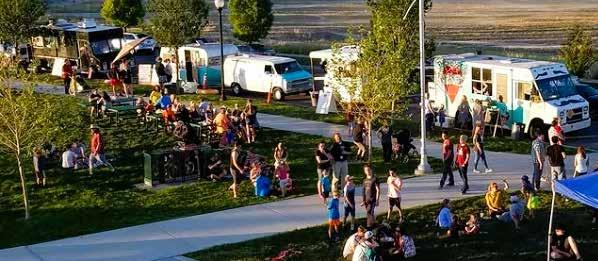
Since its first event in May 2015, the Food Truck League has grown to include more than 250 food trucks, serving thousands of people across Utah each year. (Courtesy of the Food Truck League)
Welcome to the City Journals survey! We're happy to have you here and for the opportunity to learn about how our newspapers are being utilized in our communities.
In the October issues of our newspapers, we will publish a Voters' Guide to provide readers with information about the candidates listed on each municipal ballot.
We understand how voters can visit many different resources and websites and end up looking at the same information—if not the exact same wording or candidate platforms. We hope to provide readers with the information they want to know about each
candidate. Take a moment to consider what information ultimately makes or breaks your decision to vote for a specific individual in our local elections.
“It’s important to have candidates answer the actual questions their constituents would ask them,” said City Journals Creative Director Bryan Scott.

“This is your chance to do that.”
Please respond to the survey found through the QR code, which will take less than three minutes to complete. Your response will help guide the design of our Voters’ Guide.
The “submit” button must be clicked before Monday, Aug. 18 (at 11:59 p.m.).
Thank you for your continued readership and support of your local staff here at the City Journals.







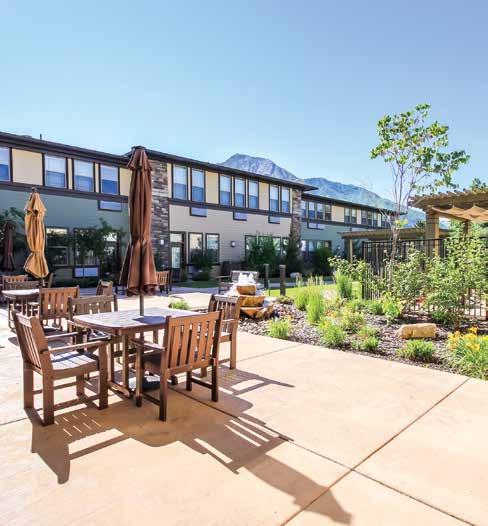

Working in the food industry? Look to see if this certification is needed.
By Julie Slama j.slama@mycityjournals.com
Whetheraspiring of becoming a sous chef, planning to serve street tacos from a food truck or seeking a part-time restaurant job — one thing is almost always required first: a food handlers permit.
Many states, including Utah, require food service workers to complete food safety training before receiving their permit. This applies to those who prepare, serve or handle food for public consumption from restaurant staff and caterers to food truck operators and others whose roles involve direct contact with food.
In Utah, earning a food handlers permit means completing a 75-minute training course focused on food safety. The course teaches how to prevent food and surface contamination, use proper time and temperature controls to avoid foodborne illnesses, and maintain a clean and sanitary environment for food preparation and service, explained Cassandra Fairclough, program specialist at the Utah Department of Health and Human Services.
“It shows you understand the basics of food safety,” she said. “There are five or six
Before handling food, handle this
things that are very concerning for food protection that can cause illness so those are some of the things taught in the training classes, like handwashing hygiene, cross contamination in food, temperature control — holding at the right temperature for the correct amount of time and those factors.”
Another significant focus is proper chemical usage, said Jeff Oaks, food protection bureau manager for Salt Lake County’s health department.
“There's a component of dishwashing that has to be done,” he said. “You have to learn how you wash dishes in a restaurant because that's different than in your house with a triple sink and not a double sink.”
After the training, participants take a 40-question exam and must score at least 75% to pass. In Salt Lake County, those who pass will receive a temporary permit; the official Utah Food Handlers Permit will be mailed within 30 days. The permit is valid for three years. The course must be retaken for renewal.
Since 2013 the Utah Department of Health has approved third-party agencies to conduct the training, although local health departments can provide training as well and they are responsible for issuing the permits. From July 1, 2023 to June 30, 2024, Salt Lake County Health Department issued 41,240 of the state’s 109,865 food handlers permits.
To find a certified provider, visit the state’s
approved training list: www.epi.utah.gov/ wp-content/uploads/foodHandler_list.pdf. Providers may offer in-person or online options, sometimes in multiple languages. Check to ensure the online courses are compatible with all devices and operating systems.
The base cost of the training is $15, though agencies may include additional processing or administrative fees. In some cases, employers may cover the cost or offer group discounts.
Additional licenses, permits or certifications may be required for specific roles — such as serving alcohol, being a food manager, running a food truck or operating a booth at a farmers market.
“Different agencies will have requirements,” Oaks said. “In Salt Lake County, all restaurant workers have a food handlers permit, but for example, there are companies that package produce locally, like a bag of carrots or lettuce, and they are regulated by the state’s agriculture and food department. But within their facilities, they require food handlers permits or some other certification. Some companies may say, we still want you to get a food handlers permit. We have almost 5,500 restaurants (and others that serve food) so all their employees either have managers’ certificates or food handlers permits. Usually, the grocery store employees have food handlers permits if they're working in the deli or the butcher shop or the produce, where they're cutting and doing food prepara-
Square Kitchen Eatery nurtures culinary talent
The mini food hall showcases and supports upand-coming chefs.
By Peri Kinder peri.k@thecityjournals.com
Square Kitchen Eatery in South Salt Lake isn’t just dishing out great food; it’s serving up opportunity. Designed as a testing ground for food entrepreneurs, the space gives chefs a chance to launch their menus and brands without the high overhead of a traditional restaurant.
Started by Ana Valdemoros and Tham Soekotjo, Square Kitchen Eatery (2435 S. State St.) is an extension of their Square Kitchen incubator, where chefs can learn all the aspects of the food industry to help them grow and scale their business sustainably.
Valdemoros owns Argentina’s Best Empanadas, which she started in her dorm room at the University of Utah. She eventually moved into a commercial kitchen, but it didn’t always accommodate her schedule. Her empanadas can be found at farmers markets and the Square Kitchen Eatery, but the journey was hard. She wants to make things easier for the next generation of food entrepreneurs.
“It’s one thing to prepare food for a farmers market on Saturday morning and then you’re done Saturday night,” Valdemoros said. “It’s another thing to be open every day, providing food with all the logistics, costs and marketing that you need to do. Square Kitchen Eatery provides all the things it takes to run a restaurant successfully and keep growing.”
Up to seven chefs can sign a one-year lease to work out of the kitchen that includes access to commercial equipment, a restaurant-style dining room, real-world experience and the opportunity to build a brand. Owners can choose their own service hours, with the option of being open 24/7.
Currently, five owners run their restaurant through Square Kitchen Eatery. The diverse menu offers food items people can’t find anywhere else.
Hispaniola Bistro opened in February, becoming the first Dominican restaurant in the state. Rusty Birds makes rotisserie chicken-based salads and wraps. Comfort Bowl has an award-winning Japanese fried chicken katsu. Shiba Boba has a variety of teas that include brown sugar, oat milk or ice cream. Argentina’s Best Empanadas uses locally-sourced products and fresh ingredients. Several of these businesses also operate food trucks.
“I want people to come and try all the businesses. Every menu is different, so you have five different options. You can come five different times,” Valdemoros said. “Supporting small businesses is very important. When we support locally-owned businesses, all the money that is spent here stays here. If you make one business successful, so they can go out on their own, that leaves room for the next one.”
While leases can be renewed, Valdemoros hopes each chef will eventually graduate to launch a restaurant of their own.
“The platform helps them a lot. There are things they need to learn to make sure they’re able to cover things on their own, without any help,” she said. “Here, there’s a rental cost, but it’s more than that. The Square Kitchen company covers utilities, the cleaning crew, the taxes, all of the things.”
Valdemoros said South Salt Lake’s city staff has been invaluable in getting the idea off the ground, helping owners acquire the correct licensing and streamlining processes. Mayor Cherie Wood even named Square Kitchen Eatery as the city’s 2025 Best Lunch Spot.
tion and established concessioners such as the (University of Utah) Utes or Utah Jazz have food handlers permits.”
“It’s best to check with your local health department to get specific conditions and information on the type of food service that is being provided so they can help people learn what is required,” Fairclough said.
She said the food handlers training and certification program is regularly reviewed by state officials, local health departments and industry professionals to ensure it aligns with the latest (2022) version of the FDA Food Code, along with Utah-specific amendments. The Food Code is designed to protect public health and provide a standardized approach to food safety across various service environments.
Oaks, who has taught food handlers permit classes, said he had parents who would bring their kids to get a food handlers permit.
“It’s good knowledge and they wanted their kids to know; it had nothing to do with employment,” he said. “If you want to up your game for food safety, food preparation or food serving at home or wherever you might be, it's not a bad idea to get it. Not all states require a food handlers permit, but I’m glad Utah does. I'm glad our legislature and our state health department see the value in it, so there's at least a minimum standard for food workers.” l
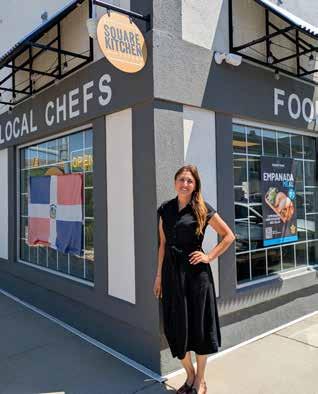
It’s been one year since they first opened, with new chefs and customers finding them every day. Valdemoros said entrepreneurs can learn about the Square Kitchen program, including costs, equipment available and additional perks at SquareKitchenSLC. com.
“This is a good opportunity, especially in this economy. Food owners can test something, work it out and get immediate feedback. They can understand the logistics, the work and the hassle that goes into a food business.” l
Ana Valdemoros started Argentina’s Best Empanadas and is co-owner of Square Kitchen Eatery, a restaurant incubator that supports rising stars in the Utah food industry. (Peri Kinder/City Journals)
Kai Pops bring cool tropical flavors to Utahns’ palates
Hawaiian-style treats embody the spirit of
“Share the Aloha.”
By Collette Hayes c.hayes@mycityjournals.com
Itwas while visiting his grandmother (ahma) in Maui, Hawaii, that 9-year-old Kekai Keala learned to make Hawaiian ice cakes. On those warm summer days, his ahma taught Keala the cherished homemade recipe. The ice cup treat was more than just a refreshing snack; it embodied the spirit of Aloha, making it truly special. It represented a lifestyle to share and a reminder to live with love, respect and compassion for everyone.
“When I came back to Utah from Hawaii, the summer I turned 9, I started selling Kai Pops at my brother’s football games,” Keala said. “I made them myself. I funneled the ingredients from Ahma’s recipe into Ziploc bags, sealed the bags, and froze them, making the perfect freezer pop ‘Aloha style.’”
A year after he started selling the freezer pops, COVID hit, and his family (‘ohana) became involved, going straight to online sales. His Kai Pop success story didn't stop there. Someone from Swig bought a Kai Pop, tasted it, and then called Keala to offer him a business deal.
“Swig wanted to sell my Kai Pops, and so, we hired a manufacturer and a co-packer to mass produce them,” Keala said. “I went from making 100 Kai Pops here and there on my own to producing 250,000 at a time
with a manufacturer. I sold with Swig for a year, and then my ‘ohana decided to invest in a food truck trailer instead of continuing with mass production. We have been selling online and out of the food truck ever since.”
Keala’s family now mass produces Kai Pops at a commercial kitchen in Springville, Utah. Every year, the company provides approximately 167 dozen freezer pops for the University of Utah Employee Appreciation Day. They also offer upper-number deliveries to special corporate events, weddings, birthday parties and golf courses.
“Kekai has two brothers, Kaluna, who is 18, and Kalama, who is 8. The three boys love working together, running the business. They are learning a lot of important life skills,” Kekai’s mom, Aisha, said. “I think one day Kekai and his older brother will take over the business and expand it. Kaluna just graduated from high school with an associate's degree. He’s going to the Marshall Islands to serve a mission for The Church of Jesus Christ of Latter-day Saints. When he returns, he plans to attend college and major in business. We always say Kekai is the creator, the founder, and the face of the company, and Kaluna is great with the business side.”
At this point, you may be curious to know what makes a Kai Pop a better choice than a regular freezer pop or even a Popsicle.
“A Kai Pop is unique because we have island flavors instead of the regular flavors usually available in Popsicles and Kai Pops are creamy and gluten free,” Keala said. “We make six flavors. Coconut and pineapple are

my favorite because they are fruity, and I like those fruits in general. Malona tastes like honeydew melon and used to be my favorite, but my taste buds kinda changed. Lychee, some people say, tastes like a mix of a watermelon and a pear. It’s my mom’s favorite flavor. Additionally, we make Hawaiian Punch and mango flavors. Kai Pops are a once-in-a-lifetime freezer treat. Once you try one, you’ll never go back to the other ones.”
Kai Pops are available for online purchase with in-store pickup. The food truck travels throughout Utah and is in Salt Lake once a week. Keala says, “Since I’m only 14, my dad drives the food truck, and whenever we have an event, we post on Instagram. You can also find us at golf tournaments, food truck roundups and carnivals. We usually have two or three events a week during the summer, and then it slows down during the winter.”
Keala plays soccer for the Utah Celtic soccer club out of Orem, and he still travels to Hawaii a couple of times a year. While there, he enjoys spending his days on Maui surfing the ocean's rolling waves until sunset.
“My ahma is now gone. When I travel to Hawaii, I stay with my uncles and aunts,” Keala said. “Kai Pops carries on ahma’s legacy of always remembering to 'Share the Aloha.’”
When asked what the secret ingredient is that makes the freezer pops so delicious, “It’s the Aloha,” Keala says with a huge smile. “My ahma taught me that, and it comes in every Kai Pop!”
To order Kai Pops on-line visit www. kaipops.com/.
For Kai Pops food truck schedule, visit Instagram @ Kai_Pops l
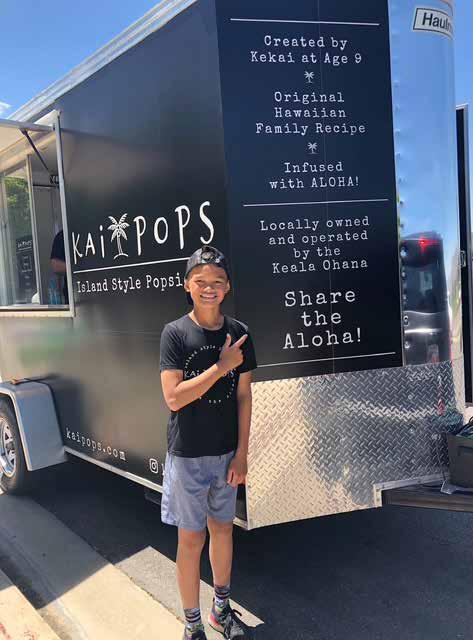
From left to right: Ahma (grandma) with Kaluna, Kalama and Kekai Keala. (Photo courtesy Aisha Keala)
“When I came back to Utah from Hawaii the summer, I turned 9, I started selling Kai Pops at my brother’s football games,” Kekai Keala said. “I made them myself.” (Photo courtesy Aisha Keala)
Savor the last days of summer with local foods and festivals
Eat up everything summer has to offer with festivals and events celebrating beloved local ingredients, rich cultural cuisine and skilled culinary artisans.
By Jet Burnham j.burnham@mycityjournals.com
Indian Food Fair
Aug. 2, 11 a.m.-8 p.m. at Liberty Park
Spice up your summer with the fragrant flavors of Indian cuisine featured at the sixth annual Indian Food Fair. Enjoy authentic food, music, dance and culture.
Festival Gastronomico Mexicano
Aug. 2, 4-9 p.m. at Centro Civico Mexicano, 155 S. 600 West
Utah’s first Mexican Food Festival will feature authentic dishes, drinks and desserts highlighting the culinary diversity of the several regions of Mexico. Local restaurants, food trucks and traditional cooks and chefs will showcase the traditional and contemporary dishes that celebrate Mexico’s culinary cultural heritage.
Bear Lake Raspberry Days
Aug. 7-9 in Garden City
Bear Lake Raspberry Days celebrates all things raspberry to eat, drink and buy. Come for the famous Bear Lake raspberry shakes and stay for the nighttime Boat Light Parade and fireworks. The three-day celebration includes the traditional Main Street parade, boat parade, craft fair, carnival rides, group Zumba, live music, rodeo and fireworks. Dive into the fruity fun of the raspberry pie eating contest or delight in the razzle dazzle of the talent show. Compete for prizes and bragging rights by joining the kid’s fishing tournament, 5K fun run, golf scramble or cornhole and pickleball tournaments.
Lemon Bash
Aug. 15, 4-9 p.m. at Ken Garff University Club at Rice Eccles Stadium
This sweet event turns lemons into
lemonade by raising money for childhood cancer research through Alex’s Lemonade Stand Foundation. Cool down with refreshing lemonade and appetizers provided with free admission. Step into the casino room, place a bid at the silent auction or enjoy family-friendly activities and access to the field.
2025 Utah Cheese Awards Tasting Reception and Medal Ceremony
Aug. 24, 2-5 p.m. at 2Row Brewing in Midvale
A buffet of locally made cheese, fruit, honey, hot sauce, sweet sauce and more will celebrate this year’s top Utah cheesemakers and makers of cheese plate foods. Tickets to taste the buffet of the winners’ wares are $20, online or at the door.
Payson City Golden Onion Days
Aug. 29-Sept.1 in Payson
For 96 years, the people of Payson have celebrated their agricultural heritage with an onion festival. The many layers of the event offer something for every interest including a historic children’s parade, soap box derby, baby contest, talent show and car show. Residents compete for the prize of the biggest homegrown onions at the art and flower show. And, of course, there are food vendors selling onions of the “bloomin’ onion” variety to hungry festivalgoers.
Hooper Tomato Days
Aug. 30-Sept. 1 in Hooper
Hooper Tomato Days is bursting with tomato-town charm and themed activities such as the 5K Tomato Chase, Cherry Tomato Baby Show and Miss Pink Tomato pageant. With all the fixings of a traditional community spirit festival—barbecue competition, pancake breakfast, rodeo, live music, parade and fireworks—this year will honor its milestone 100th year by including features from the earliest years of the event such as a traveling band riding around town to rouse residents for the first day of the festival. The event also features unique smalltown sport with its dog race, cow drop contest, kids sawdust scramble and trash fishing.
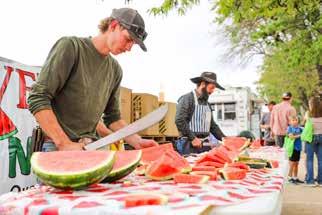

Salt Lake Greek Festival
Sept 5-7, Friday and Saturday 11 a.m.10 p.m., Sunday noon to 8 p.m.
Journey to the land of rich food, lively music and charming culture at the 49th annual Greek Festival. Sweet and savory Greek delicacies and traditional bouzouki music are as close as the north parking lot of Holy Trinity Cathedral at 279 S. 300 West in SLC.
11th annual Eat Drink SLC
Sept. 10 and 11, 5-8 p.m. at Tracy Aviary
Enjoy an elevated culinary experience sampling food and drink from locally owned restaurants, craft breweries and artisan purveyors while enjoying live music and dance performances.
SLC VegFest
Sept. 13, 12-8 p.m. at Library Square
Sample vegan dishes from local restaurants or discover your new favorite vegan baked goods at the ninth annual SLC VegFest. This local celebration of veganism and plant-based eating is family friendly, with a kids area and live music. An adults-only beer garden features all vegan varieties.
Festa Italiana
Sept. 13 and 14, Saturday 11 a.m.-10 p.m., Sunday 11 a.m.-7 p.m. at The Gateway Plaza

Slurp, swallow and savor a variety of region-based Italian cuisines, beer and wine as proud Italian-Americans celebrate their roots. Watch cooking demos and explore arts and crafts booths, or compete in the pizza or pasta eating contests. Learn about Italian culture through historical displays, live music, street performers, vintage bike show and exotic Italian car displays.
Brigham City Peach Days
Sept. 19 and 20 in Brigham City
Have a peachy keen time celebrating with a community proud of its produce. Peaches are the highlight of the event but the two days of festivities also include music concerts, car show, Harley and Custom Bike Show, quilt show and two different parades. Don’t miss the Brigham’s Beard Competition with categories for best mustache, best goatee, longest beard and best peach fuzz.
Melon Days Festival
Sept. 19 and 20 in Green River
For 119 years, Green River has celebrated their famously tasty melons and their growers with a parade and craft fair. Enjoy a slice of smalltown enthusiasm for melons at this year’s breakfast in the park, melon carving, photo contest, pony/unicorn rides, softball tournament, Fun Shoot, Melon Run, junior entrepreneur market and golf scramble. l
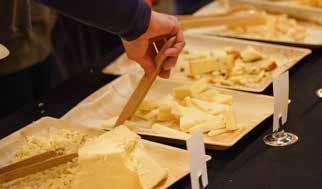
Eating juicy, locally grown melons is one of the main events at Green River’s annual Melon Days Festival. (Photo courtesy Robin Hunt)
A buffet of 2021’s Utah Cheese Maker winners’ prized products. Utah Cheese Awards Founder and Director Steven R. Jerman said the most competitive categories this year are cheddars, flavored cheeses and hot sauces. (Photo courtesy Steven R. Jerman)
Pizza and pasta eating contests are part of the fun at Festa Italiana. (Photo courtesy Sergio Coppa)
Watermelons are featured prominently in the annual Melon Days parade. (Photo courtesy Robin Hunt)
The Other Side Donuts celebrates first year of success
The Other Side Donuts one-year anniversary celebration brings together The Other Side Academy graduates, locals and others who started the organization.
By Sienna Chubak s.chubak@thecityjournals.com
TheOther Side Donuts celebrated its oneyear anniversary June 28 with a full-day event that brought in people from all over Utah. With bouncy castles, a dunk tank and doughnut decorating, the shop commemorated their successful year with activities that highlighted who they are.
Donald Bostwick, a recent graduate of The Other Side Academy, said, “I’ve done a lot of bad things in my life; this was a good one.” Now working for Progressive Insurance, Bostwick attended the Academy for two years before beginning his “workout phase,” where he began integrating back into society. He currently borrows a car from the Academy to get to work, but has plans to buy his own and become more independent from the program.
The Other Side Academy works in tandem with The Other Side Village, which is a nonprofit organization that builds tiny homes to help men and women who are coming out of chronic homelessness become a part of a community. Bostwick was on his way to prison when he decided to write a letter to the Academy to try and hopefully do something different, other than keep going in and out of jail, as he had been all his life.
As for The Other Side Donuts, it is the Village’s first social enterprise and all of the proceeds go directly to the Village. CEO Tim Stay said, “It’s just around the corner from The Other Side Village, and many of our residents that live at the Village also work at The Other Side Donuts, so it’s close prox-
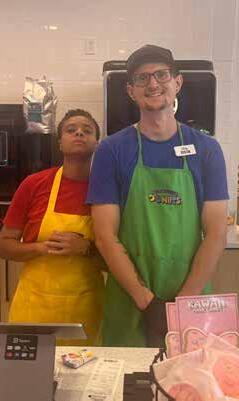
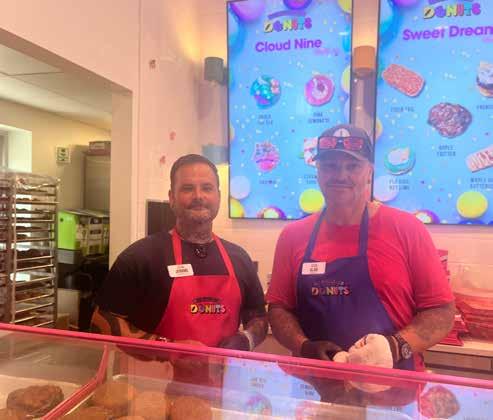
imity, but it also gives them employment and job skills and opportunity to become self-reliant.”
The employees working at The Other Side Donuts were every bit as passionate and vibrant as the location itself. Bright colors, rainbows, clouds, flowers and sparkles filled the inside and outside of their shop at 760 S. Redwood Road. Bostwick was happy to include that he was even on the construction crew and cut out the clouds that hung from the ceiling. l

Nominate a Local Hero for Millcreek's 9/11 Tribute
Whether they’ve served in the military, worked as a first responder, or made a lasting impact through acts of selfless service, we want to help you honor their story.

The Millcreek Business Council is collecting short bios and photos of local heroes to feature at our 9/11 Tribute Event: MILLCREEK COMMON
Thursday, September 11, from 5:00 PM to 8:00 PM

To participate, please email a photo and a brief bio (3–5 sentences) of your hero to: esummers@millcreekut.gov by Tuesday, August 26. Join us for an evening of live performances, local vendors, giveaways, and a special award ceremony honoring UPD and UFA.
Let’s come together as a community to recognize and celebrate the heroes among us.
The Other Side Donuts employees and The Other Side Village residents Candance (left) and Austin (right). (Sienna Chubak/City Journals)
The Other Side Donuts employees and The Other Side Village residents Jermone (left) and Alan (right). (Sienna Chubak/City Journals)
Milk & Cereal and Funfetti Birthday Cake doughnuts. (Sienna Chubak/City Journals)
Bridging the gap: Making farm-to-fork products affordable
Misconceptions about the cost of locally-produced food keep some families from enjoying the benefits.
By Peri Kinder peri.k@thecityjournals.com
Local farmers markets are welcome events, recognized for delivering fresh, seasonal produce and food items. But for some families, the price of farm-fresh products seems to be too high, creating a nutritional divide for lower-income households.
Natalie Loots wants to change that narrative. She is the Community Food Security Program manager with the Utah Department of Health and Human Services and said there are several programs available to make farmers markets accessible and affordable.
“Our main goal is to make local foods, like fruits and vegetables and other high-nutrition foods more affordable for low-income folks,” Loots said. “Our main program that we operate is called the Double Up Food Bucks program, which has been around since 2015.”
With Double Up Food Bucks, people enrolled in the SNAP program can get up to $20 of free Utah-grown produce with every visit to a participating market. The program offers a dollar-for-dollar match, up to $20, matching SNAP benefits.
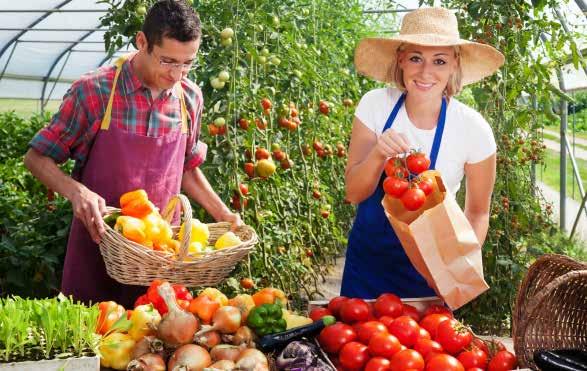
“If folks go to the information booth at the farmers market, they swipe their SNAP card and they’ll get tokens for SNAP and then tokens for Double Up to use at the different vendors at the market. There’s no paperwork they need to fill out. All they have to do is have a valid SNAP card that is currently active.”
Loots said the CFSP works to eliminate barriers that limit access to nutritionally-dense foods. Initiatives like the Senior
Farmers Market Nutrition Program offers low-income seniors a $50 farmers market voucher to use throughout the season. Utah Produce Rx partners with local healthcare clinics to create a $300 fruit and vegetable prescription patients can use at participating farmers markets.
Caroline Hargraves serves as the marketing director for the Utah Department of Agriculture and Food’s economic development division. She said while prices might
be higher on some items at farmers markets, the food quality and nutritional value is much better than what can be found in many grocery stores.
“I think a lot of people don’t understand that it takes time, energy and labor to produce food. We have such a culture in America of expecting food to be cheap but people who produce it deserve a living wage,” Hargraves said. “Farmers get such a small portion of the dollar that the average consumer pays at the grocery store and I think people don’t understand that. But when you buy directly from farmers at a farmers market, that money is going directly to them.”
Utah’s DHHS operates a local food purchasing assistance program to help socially disadvantaged farm owners. Since the spring of 2022, the program has purchased food from local farmers to distribute to families experiencing food insecurity.
More than 60,000 individuals have received farm fresh food at nearly 600 distribution events across the state. This will be the last summer the program will be utilized, as federal funding has been cut, but organizers are looking for additional funding sources.






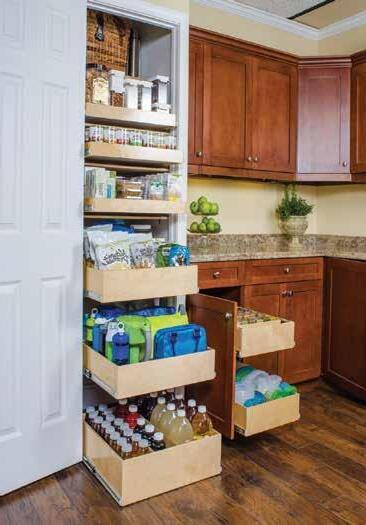











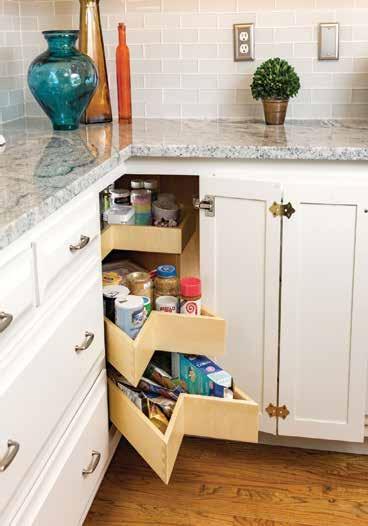



A 2025 Utah State University study, Cultivating Community and Commerce: A Summary of the Statewide Social and Economic Impacts of Utah Farmers Markets, found that farmers markets offer more than just fresh produce. Communities hosting farmers markets fostered community connection, empowered small businesses and contributed to the state’s economy.
The study also found food deserts are prevalent in the state. These areas have limited access to nutritious food, affecting more than 800,000 Utah residents. Farmers markets address this dire need, so affordability is key.
“We have several initiatives at the Department of Agriculture and Food to encourage people to support local farmers and ranchers,” Hargraves said. “It does make a difference, both for that individual, like a farmer or business owner, and for the community. The more dollars we can keep circulating in our local economy, the better. But also it tastes better. With local foods, you can taste the difference.”


For more information about farmers markets affordability programs, or to find participating markets, visit uah.org/get-help.
“Our work is aiming to make food security accessible in a way that it functions as a social determinant of health,” Loots said. “Farmers markets are for everybody, and we try to make eating local produce accessible to everybody…Access to healthy foods affects chronic disease outcomes or health outcomes, longevity and quality of life. Those are so deeply connected.” l
Locally produced food has better health benefits and can be more affordable than people realize. (Canva stock)
Community Hero: Max Elliott Celebrates 65 years of dedicated service to Davis County
By Becky Ginos becky.g@thecityjournals.com
been 65 years since Max Elliott started his career in the Davis County Surveyor’s Office and he’s still going strong. Elliott was just reelected as Davis County Surveyor for another three years – so retirement is in the distance.
“Surveying is kind of a unique line of work,” said Elliott. “You’re more outside than inside.”
It was more or less luck that brought him into the field, he said. “I worked under Don Davis then worked under Glenn Austin. When he retired I served the remainder of his term.”
Elliott served as the elected surveyor for eight terms and in 2021 started his ninth term. During that time he had only one challenger for his position.
“If there was an election and they found out he was running nobody was willing to run against him,” said Administrative Secretary Louise Miller. “Everybody respects him. He knows everything about Davis County. If you ask a question he’ll know where to find the material.”
Max is wonderful to work for, she said. “He lets us do our job but he’s there if needed. I’ll be working on something and he'll ask if I need to sit down or suggest I need time off. He cares about us.”
He treats everyone with respect and kind-
ness, Miller said. “If the public comes in and needs something he’ll give the answer but if he doesn’t know the answer he’ll search until he finds it.”
“I have known and worked with Max for many years,” said Chief Deputy Surveyor, Kyle M. Corbridge. “One day we were surveying in an open field and we were using a 300 foot metal chain to measure distances with. Max took the front end of this metal tape and I held onto the rear end of the chain.”
Corbridge said Max went out about 295 feet from him to set a point in the ground. “I was standing next to an electrical fence the farmer had to keep his livestock in. I was holding onto the reel of this tape secured onto a wooden handle. I somehow ‘accidentally’ made contact with this fence and about 300 feet away I heard a commotion. It took some time before he was able to laugh about that.”
“I’ve seen a lot of changes in 65 years,” said Elliott. “I used to work with steel tapes that were 300 feet long. Now we’ve got global system positioning. It can tell within a dime in an area if it’s done right.”
There’s satisfaction in keeping the real map (which is the earth itself) in place, said Elliott. “It’s quite a job keeping those points in place with all of the growth.”
Elliott said surveyors are concerned that in a few years there won’t be enough people interested in the field to follow in their footsteps.
August is National Self Awareness Month






“Most surveyors are in their 50s, 60s or 70s. I know if they got involved in doing it they’d be excited to come into the profession. I don’t think you can meet anyone who would say they don’t enjoy it.”
“I know him as a man of integrity,” said Corbridge. “As a surveyor he is thorough, en-
suring the work is being done in an accurate and precise manner. He has been a great leader, teacher and mentor through his examples and patience.”
“I thoroughly enjoy this profession,” said Elliott. “I got into it and stayed.” l














Max Elliott stands on Frary Peak. Elliott has three more years in his term as Davis County Surveyor (Courtesy photo)




























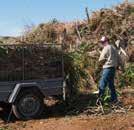

Have you ever wondered what Salt Lake County actually does? If you live in one of the 23 cities in our area—like Murray, West Valley, South Jordan or Millcreek—you might think the county doesn’t affect your daily life. But the truth is, Salt Lake County helps all of us in big and important ways. Everyone who lives in the Salt Lake Valley is part of Salt Lake County.
Salt Lake County is like the glue that holds many parts of our community together. While cities take care of things like neighborhood parks and snow plowing on local streets, the county provides services that work best when shared by everyone. These regional services save money and help us all live better.
What Services Does Salt Lake County Provide?
Let’s break it down. Salt Lake County helps in areas like:
- Public Safety and Criminal Justice: The county runs the jail, provides prosecutors and public defenders, and helps with emergency response. In fact, public safety is the county’s biggest responsibility—it makes up over 74% of the county’s general fund.
- Elections: The county clerk makes

sure elections are fair and secure. Cities contract with the county clerk for their municipal elections.
- Health Department: The county helps keep our community healthy by inspecting restaurants, giving vaccines, and cleaning up unsafe places like abandoned camps.
- Senior Services: Through programs like Meals on Wheels and senior centers, the county helps older adults stay active and connected.
- Mental Health and Addiction: The county leads programs for people who need support with mental illness or substance abuse, partnering with other groups to reach more people.
- Libraries: The Salt Lake County Library system serves most of the area (Mur-





ray and Salt Lake City have their own), giving people access to books, computers and classes.
- Parks and Recreation: From big parks and trails to swimming pools and rec centers, the county helps families stay active both indoors and outdoors.
- Arts and Tourism: The county owns facilities like Abravanel Hall and the Capitol Theatre, and brings in out-of-state visitors through conventions and tourism, which boosts our economy. The county owns the Salt Palace and Mountain America Expo Center.
- Property Tax and Land Records: The county collects property taxes (even for cities and schools) and keeps track of land ownership and real estate records.
A Government That’s Smart With Your Money
Salt Lake County has a budget of about $2 billion. While that sounds like a lot, only part of it is under the County Council’s full control. About $500 million of the total budget is what we call “passthrough” taxes—meaning the county collects it and passes it to others, like UTA or cities.
To stay financially strong, the Salt Lake County Council keeps a close eye on
spending. They’ve helped the county keep a AAA bond rating—the highest possible score, showing the county is careful with its money. The council also does stress tests and checks each department regularly to look for savings and to improve services.
Utah law doesn’t let counties collect more money just because home values rise. Instead, counties can only collect more if there’s new growth, like a new building. That keeps taxes fair, but it also means the council has to plan ahead and budget wisely.
One County. Many Communities. One Mission.
Salt Lake County doesn’t replace cities—it supports them. Whether your city needs help with road signs, snow removal or mapping, the county can step in with expertise and resources. It’s about teamwork.
The county’s job is to serve, support and strengthen every community in the region. By managing big services, using your tax dollars wisely, and working across city borders, Salt Lake County makes life better for all of us.
So next time you vote, enjoy a park, visit the library, or call for help—remember, Salt Lake County is there for you. l
























There was no “gentle parenting” in the ’70s, especially at the dinner table. You either ate what was prepared for you, or you were labeled a sniveling, spoiled brat who didn’t care if children in China starved because you wouldn’t eat your meatloaf.
One time, I was forced to stay at the table until I’d eaten all my potatoes. I blame my dad. He had told me that potatoes have eyes and then lost his mind when I refused to eat mashed potatoes. I was convinced the lumps were eyeballs and I was not about to eat potato eyeballs.
I wasn’t trying to be picky, I just didn’t like things that were mushy, smelly, runny, squishy, eggy or slathered in mayo.
Grandma Stewart considered me the most coddled child in history. She could not fathom how I could reject her slimy bowl of lima beans, which included (if memory serves) onions, ham, shampoo and arsenic.
“If you don’t eat your lima beans, it just means you're spoiled,” she huffed when I put my head on the table to cry. She said the same thing when I refused to eat bread crust, cottage cheese, tuna fish or canned beets.
Side note: Grandma loved Jordan almonds, the only food she refused to share. She’d hide them from the grandkids because she knew we’d eat them. We scoured the cabinets until we found them and devoured every last one. I think that’s called a self-ful-
Foods that ruined my childhood
Peri Kinder Life and Laughter

filling prophecy, Grandma.
As a kid, terrible food was everywhere. If I wasn’t being subjected to a disgusting recipe Mom found in a McCall’s magazine, I was being betrayed by school lunch ladies. They’d slide a quivering square of delicious cherry Jell-O, topped with whipped cream, onto my lunch tray. But the joke was on me when I took a big bite of the tasty dessert only to learn it was sour cream, not whipped cream. Who does that to a child? Sadists, that’s who!
While eating dinner at a friend’s house, her mom shamed me for not eating the disgusting canned peas. So, I ate it and cried. It was just another meal I was forced to eat, like a hostage.
Sometimes, I’d take a proactive approach when it came to avoiding foods I didn’t like. Mom often made chicken pockets, which were shredded chicken mixed with cream cheese, baked into crescent roll dough. I hated cream cheese (mushy,

smelly). When I saw it in the fridge, I cried. I hid the box of cream cheese behind the wilted lettuce in the vegetable bin, but Mom always found it.
Other ploys included acting sick (rarely worked), “forgetting” about dinner while playing outside (never worked), pretending to sleep on the couch (sometimes worked) and throwing a fit at the dinner table (never worked, plus I lost dessert).
I don’t know why Mom refused to accommodate my delicate palate. I was only repulsed when it came to sauces, dressings, mustard, canned foods, Vienna sausages, tuna, cottage cheese, sour cream, maple syr-
up, vegetables, macaroni salad, yogurt, the textured vegetable protein popular in the ’70s or anything slathered in mayo. It didn’t matter. I was expected to “Learn to like it, or else!” Or else, what? A grateful digestive system? A lack of nightmares? A healthy relationship to food?
With four daughters, I understand how hard it is to make meals for ungrateful children. I’ve had daughters who refused to eat pizza, spaghetti, meat, dairy products, lasagna, hamburger casserole or anything with onions. They probably have their own list of foods that ruined their childhood. That’s what therapists are for. l









MEET DR. HARARAH, M.D.
Dr. Hararah, a triple board-certified physician, completed his residency in Family Medicine at NYU Langone and a fellowship in Undersea and Hyperbaric Medicine/Wound Care at SUNY Upstate University Hospital. With additional training in Bariatric Medicine and certification from the American Board of Obesity Medicine, he brings expertise in primary care, dive medicine, bariatric medicine, and clinical hyperbarics.
A firm believer in the biopsychosocial approach, Dr. Hararah views patients as complex individuals whose lives and experiences shape their healthcare. Known for his compassionate care and dedication, he listens intently, prioritizes your well-being, and works to find the best diagnosis and treatment plan.
As the owner of Riverstone Medical, Dr. Hararah is committed to helping you achieve your best health.
OUR SERVICES
Primary Care:
• Annual preventative physical exams
• Cancer screening
• Sick visits
• Specialist referrals
• Medication refills
• Chronic disease management
Specializing in Wound Care:
• Chronic, non-healing wounds
• Acute, minor wounds
• Diabetic foot ulcers
• Venous ulcers
• Arterial ulcers
• Pressure injuries...and more!
Patients First:
“Dr. Hararah understands the daunting and sometimes demoralizing feelings health care sometimes causes, and wants patients to be truly seen and valued as human beings.”


